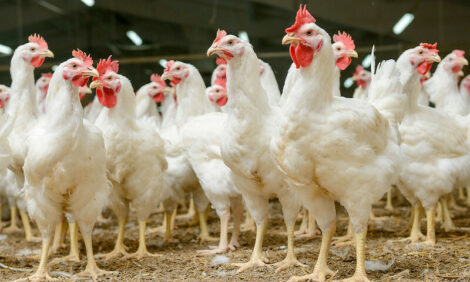



Heat-stress study shows need to increase ventilation with stocking density
As bird density increases, broiler producers need to be “more aggressive” with house ventilation to prevent heat stress in flocks, Brian Fairchild, PhD, professor, and Ming Lin Teo, graduate research assistant, University of Georgia, told Poultry Health Today.To give producers a better grasp on the effects of bird density on broiler body temperature, Fairchild and Teo measured deep-body temperature by surgically implanting small data loggers in the abdominal cavity of broilers.
After establishing a baseline, the researchers evaluated the impact of stocking densities from 1 to 6.5 square feet per bird, Teo said.
The results of the study demonstrated that as stocking density increases, deep-body temperature increases as well, she added.
What the birds feel
Ventilation helps control effective temperature — what the birds feel — which is a combination of air temperature, relative humidity, air speed and bird density, Fairchild explained.
Average broiler weights in the US today are 6 to 6.5 pounds per bird. “As we put more birds in the house, more pounds in the house, we’ve got to be a little bit more aggressive with our ventilation rates, especially in hot weather,” Fairchild said.
This research will help producers improve their ventilation protocols. By providing optimum environments and minimising heat stress, the energy from the feed can go toward growth and development, he said.









